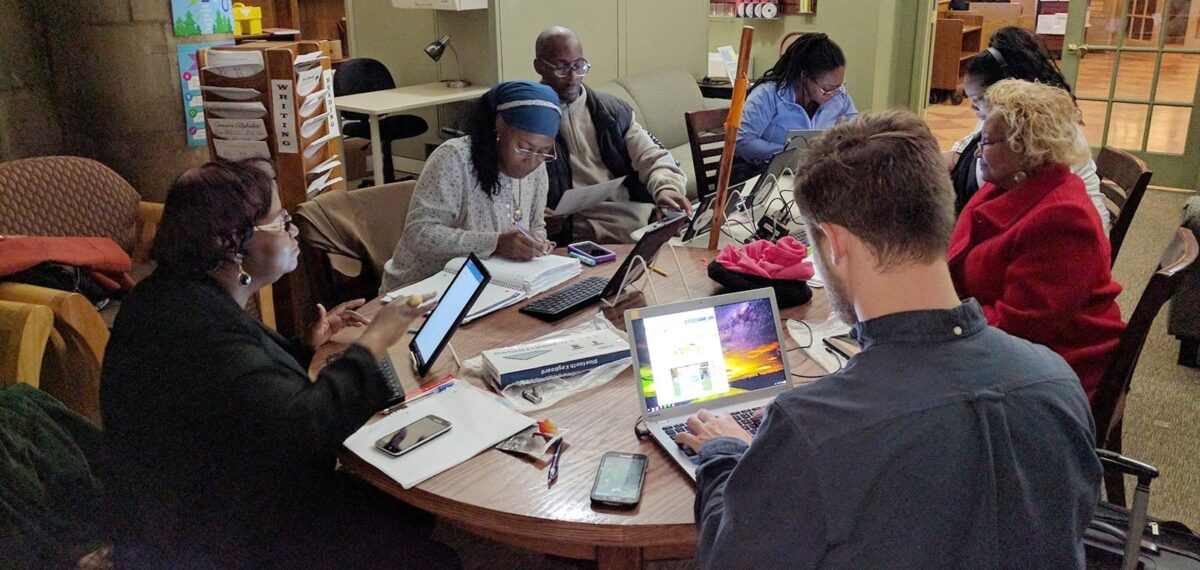Originally published on Aug 28, 2019 on www.wise-qatar.org.
If you’re like me, you probably grew up thinking that serious learning only happened in school, college and university. The consequence of this belief is that it devalues, denies, and discriminates against how most of the world actually learns, which is outside of formal education. If we’re serious about achieving education for all, then we must admit that a school-centered approach ignores the vast majority of the world’s population. Fortunately, where formal education stops, public spaces are stepping up.
Often, arguments about access and education focus on formal education. For example, much discussion goes into how best to enroll more children in school and more students in a university. No doubt these are important pursuits, but they ignore the fact that the majority of the world’s population today is not enrolled in any type of formal education, and may never be. That’s somewhere between 4 and 5 billion people! This means that, given our admiration for formal education, most people today are effectively exiled from learning something that our society grants significant value.
Past their early twenties, most people are told that they are too old to attend formal education. For those aged 20 to 100, learning is just for fun or only recognized when dressed as workforce development. Even for students attending school, learning after school or during summer break is deemed interesting, but certainly not important. Those lucky enough to have the full meal deal — primary, secondary and tertiary education — will, along with everyone else, spend the majority of their lives being told that what they are learning outside of school is not as important and has less value than what is learned in school.
Adults might be disqualified from attending kindergarten, but they are certainly welcome to learn inside another cherished environment: the public space. Public spaces are miraculous inventions on every level. Parks can host you and your friends. Libraries are peaceful and full of free educational resources. A town square can instantly host a market, a lecture, or performance. Public spaces exist all around the world — likely in your local neighborhood. They’re remarkable places to meet people and build community, and, quite radically, they invite the public to engage with them on their own terms. Most of all, they are entirely free to use, with benches, tables, chairs, shade, and sometimes even wifi! Public spaces offer so many great things, but can they also provide high-quality non-formal education?
Peer 2 Peer University (P2PU) took this question as a call to action. After years of leading open education initiatives, P2PU’s focus turned to public spaces as a massively underused asset for non-formal education. To start, P2PU teamed up with the Chicago Public Library in 2015 and started running learning circles: free study groups for people who want to take online classes together, in-person and in public spaces.
Learning circles essentially reconfigure the best parts of formal education for use in accessible, open, and non-formal spaces. The classroom is replaced by the local public library meeting room. The teacher is replaced by a learning circle facilitator, who does not have to be an expert on the subject at hand. Instead, it is their job to organize the learning circle and guide the discussion. Classmates are replaced by a group of 5–15 peer learners who meet together once a week for 6 to 8 weeks. The learning materials, instead of textbooks or lectures, are based on the learners’ existing knowledge and experience, grounded in free online courses, sometimes even created by the learners themselves, and accessible by computer, projector or printer.
P2PU believes that people thrive when learning has real outcomes, is connected to individual interests, and is paired with in-person support. Those strategies can be tough to achieve within a formal and standardized curriculum. Learning circles, in contrast, offer these experiences because they are completely self-directed, with learners creating their own goals based on their own individual needs. Learning circles, based on the concept of peer learning, also create a positive environment from which everyone is responsible for supporting one another. For these reasons, learning outcomes remain valuable and recognizable while existing outside of formal education.
In the past three years, more than 4,000 learning circle meetings have occurred in public spaces like libraries and community centers on four continents. In Nairobi, Kenyan librarians regularly host learning circles on topics that include entrepreneurship, public speaking, and eating healthy meals. In Los Angeles, neighbors are learning to speak Spanish; in Toronto, library patrons are creating open-source software; and in Boston, the public library helps people write fiction. The results have been astounding! Learners have landed jobs, published books, and significantly increased their digital literacy skills. What’s more, many learning circle graduates have gone on to start their own learning circle (for free).
The goal of learning circles is not to turn every library into a school. Instead, learning circles create a bridge between formal education and non-formal public spaces. Just as important as creating a high-quality learning experience is ensuring that it is always reinforcing the benefits of public spaces: building relationships between neighbors, creating an inviting and relaxed environment from which to learn, and of course, remaining completely free of cost.
Schools are not solely responsible for educating the public. If we are committed to ensuring that every person has access to education then we must think beyond schools and address the places where the vast majority of the world learns. Learning circles, for their part, enable public spaces to be an integral part of this promise.
